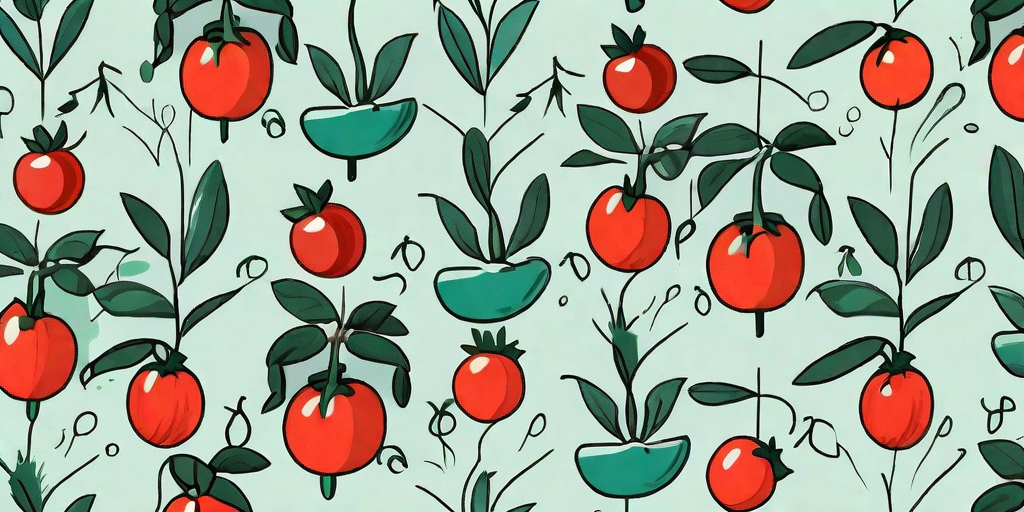
Greetings, fellow tomato enthusiasts! If you're here, it's likely because your tomato harvest has been a bit, well, underwhelming. Fear not, for we are about to embark on a journey to discover why your tomatoes are more cherry-sized than beefsteak, and how to rectify this most unfortunate situation.
Understanding Tomato Growth
Before we dive into the nitty-gritty of tomato troubles, it's important to understand a bit about how tomatoes grow. You see, tomatoes aren't like your average houseplant. They're divas, demanding the perfect balance of sunlight, water, and nutrients. If any of these factors are off, your tomatoes will let you know by producing less-than-stellar fruit.
However, tomatoes are also like that friend who never tells you what's wrong, expecting you to figure it out. They won't explicitly tell you what they need, but with a little knowledge and observation, you can decode their signals.
The Role of Sunlight
Tomatoes are sun worshippers. They need at least 6-8 hours of sunlight each day to produce large, juicy fruit. If your plants are in a shady spot, they might produce smaller fruit as a form of protest. It's their way of saying, "Hey, I need more sun!"
So, if your tomatoes are in a shady spot, consider moving them to a sunnier location. If that's not possible, you might need to invest in some grow lights. Your tomatoes will thank you for it.
Watering Woes
Watering tomatoes is a bit like Goldilocks' porridge. Too much, and your plants will drown. Too little, and they'll dry up. You need to find the just-right amount.
Underwatering can lead to small, dry fruit. Overwatering, on the other hand, can lead to waterlogged roots and a host of other problems. The key is to keep the soil consistently moist, but not waterlogged. If the top inch of soil is dry, it's time to water.
Nutrient Needs
Tomatoes are heavy feeders. They need a lot of nutrients to produce large, juicy fruit. If your soil is lacking in nutrients, your tomatoes will produce smaller fruit.
Regularly adding compost or a balanced fertilizer can help keep your soil nutrient-rich. Just be careful not to overdo it. Too much fertilizer can lead to leafy, green plants with few fruits.
Common Tomato Problems and Solutions
Now that we understand the basics of tomato growth, let's look at some common problems that can lead to small fruit and how to fix them.
Blossom End Rot
Blossom end rot is a common problem that can lead to small, deformed fruit. It's caused by a calcium deficiency in the soil.
To fix this issue, you can add lime to your soil to increase its calcium content. Just be sure to follow the package instructions to avoid overdoing it.
Tomato Blight
Tomato blight is a fungal disease that can lead to small, discolored fruit. It's most common in wet, humid conditions.
To prevent tomato blight, make sure your plants have good air circulation and avoid watering from above. If you notice signs of blight, remove and dispose of the affected leaves to prevent the disease from spreading.
Pests
Pests like aphids, whiteflies, and hornworms can also lead to small fruit. These critters suck the sap from your plants, depriving them of nutrients.
To control pests, you can use organic insecticides or introduce beneficial insects like ladybugs and lacewings to your garden. Regularly inspecting your plants for signs of pests can also help catch an infestation early.
FAQs
- Why are my tomatoes small and hard?
- This could be due to a lack of water or nutrients. Make sure you're watering your plants regularly and adding compost or a balanced fertilizer to your soil.
- Can I still eat small tomatoes?
- Absolutely! They might not be as juicy or flavorful as larger tomatoes, but they're still perfectly edible.
- How can I prevent small tomatoes in the future?
- Ensure your plants get enough sunlight, water, and nutrients. Regularly inspect your plants for signs of pests or disease, and address any issues as soon as you notice them.
Conclusion
So, there you have it. If your tomatoes are lacking in size, it's likely due to a lack of sunlight, water, or nutrients, or a problem like blossom end rot, blight, or pests. But with a little knowledge and care, you can fix these issues and enjoy a bountiful harvest of large, juicy tomatoes. Happy gardening!











